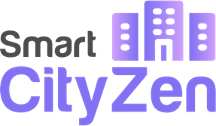 Equations Work was an extensive user of BERT(Bidirectional Encoder Representations from Transformers ). Back in 2019, we thought “This was it!” This is the peak of NLP and hence AI. However, in 2022 Equations Work was contracted to create an application for doing “Contract Analysis” using GPT. That was the time we realized that BERT was just the beginning. Large Language Models (LLMs) such as OpenAI’s GPT-3.5/4 have revolutionized natural language processing and machine learning applications. They are capable of generating human-like text and performing a wide range of tasks, from content creation to translation and even code generation. However, the computational resources required to train and deploy these models can be substantial, resulting in high costs. In this blog post, we will explore various strategies to optimize costs while using large language models effectively.
Equations Work was an extensive user of BERT(Bidirectional Encoder Representations from Transformers ). Back in 2019, we thought “This was it!” This is the peak of NLP and hence AI. However, in 2022 Equations Work was contracted to create an application for doing “Contract Analysis” using GPT. That was the time we realized that BERT was just the beginning. Large Language Models (LLMs) such as OpenAI’s GPT-3.5/4 have revolutionized natural language processing and machine learning applications. They are capable of generating human-like text and performing a wide range of tasks, from content creation to translation and even code generation. However, the computational resources required to train and deploy these models can be substantial, resulting in high costs. In this blog post, we will explore various strategies to optimize costs while using large language models effectively.
1. Choose the Right Model
Not all language models are created equal in terms of computational requirements and associated costs. When selecting a large language model, consider your specific needs and the scale of your project. For example, GPT-3.5 is a powerful model, but it may be overkill for certain tasks that can be adequately handled by smaller models or fine-tuned versions. Carefully evaluate the trade-offs between model size, cost, and performance to make an informed decision. Usage of Ada, Babbage, or Curie from the same house of OpenAI is cost-effective, but somewhere quality does get a tad bit compromised. Here are some other OpenSource models that you might want to check.
2. Fine-Tuning and Transfer Learning
Instead of training a large language model from scratch, you can leverage fine-tuning and transfer learning techniques. Fine-tuning involves training a pre-trained model on a specific task or domain with a smaller dataset. By using transfer learning, you can benefit from the knowledge already encoded in the pre-trained model, reducing the overall training time and computational resources required. This approach can significantly cut costs while still achieving satisfactory results. Equations Work has the experience of working on both. Get on a call with our team to understand more about this use case.
3. Data Preprocessing and Dataset Selection
The quality and size of your training dataset can have a significant impact on both the performance and cost-effectiveness of your language model. Preprocess your data carefully to remove noise, redundant information, and irrelevant content. Additionally, consider the size and diversity of the dataset. While a larger dataset can potentially improve performance, it may also increase training costs. Striking the right balance is crucial.
4. Model Parallelism and Distributed Computing
Training large language models often involves distributing the workload across multiple GPUs or even multiple machines. By leveraging model parallelism and distributed computing techniques, you can effectively scale your training process while minimizing costs. However, it’s important to ensure that your infrastructure and resources are properly optimized for parallel processing to maximize efficiency and cost-effectiveness.
5. Batch Processing and Efficient Resource Utilization
When deploying large language models in production, batch processing can be a cost-saving strategy. Instead of making individual requests, process multiple inputs together in a single batch. This reduces the number of API calls or inference requests, leading to better resource utilization and potentially lower costs. Additionally, consider optimizing your code and algorithms to minimize redundant computations and unnecessary data transfers.
6. Dynamic Model Scaling
Not all tasks require the same level of model sophistication or computational resources. For tasks with lower complexity or real-time requirements, consider dynamically scaling your model’s size or using smaller models. Many language models have different variants or sizes available, allowing you to choose a model that best suits your needs and budget. Dynamic scaling ensures efficient resource allocation while maintaining adequate performance levels.
7. Monitoring and Cost Analysis
Regularly monitor and analyze the costs associated with your language model usage. Keep track of the resources consumed, including compute instances, storage, and data transfer. By understanding the cost breakdown, you can identify potential areas for optimization and take proactive measures to control expenses. Explore cost management tools and frameworks that provide detailed insights into resource utilization and cost patterns.
Conclusion:
Large language models offer remarkable capabilities, but optimizing costs is essential for their practical adoption. By choosing the right model, leveraging fine-tuning and transfer learning, carefully selecting datasets, utilizing parallel processing, batch processing, and dynamic scaling, and monitoring costs, you can strike a balance between performance and affordability. As the field of large language models continues to evolve, cost optimization strategies will play a vital











 Click edit to change this text. Lorem ipsum dolor sit amet...
Click edit to change this text. Lorem ipsum dolor sit amet...





 Equations Work was an extensive user of BERT(Bidirectional Encoder Representations from Transformers ). Back in 2019, we thought “This was it!” This is the peak of NLP and hence AI. However, in 2022 Equations Work was contracted to create an application for doing “Contract Analysis” using GPT. That was the time we realized that BERT was just the beginning. Large Language Models (LLMs) such as OpenAI’s GPT-3.5/4 have revolutionized natural language processing and machine learning applications. They are capable of generating human-like text and performing a wide range of tasks, from content creation to translation and even code generation. However, the computational resources required to train and deploy these models can be substantial, resulting in high costs. In this blog post, we will explore various strategies to optimize costs while using large language models effectively.
Equations Work was an extensive user of BERT(Bidirectional Encoder Representations from Transformers ). Back in 2019, we thought “This was it!” This is the peak of NLP and hence AI. However, in 2022 Equations Work was contracted to create an application for doing “Contract Analysis” using GPT. That was the time we realized that BERT was just the beginning. Large Language Models (LLMs) such as OpenAI’s GPT-3.5/4 have revolutionized natural language processing and machine learning applications. They are capable of generating human-like text and performing a wide range of tasks, from content creation to translation and even code generation. However, the computational resources required to train and deploy these models can be substantial, resulting in high costs. In this blog post, we will explore various strategies to optimize costs while using large language models effectively.